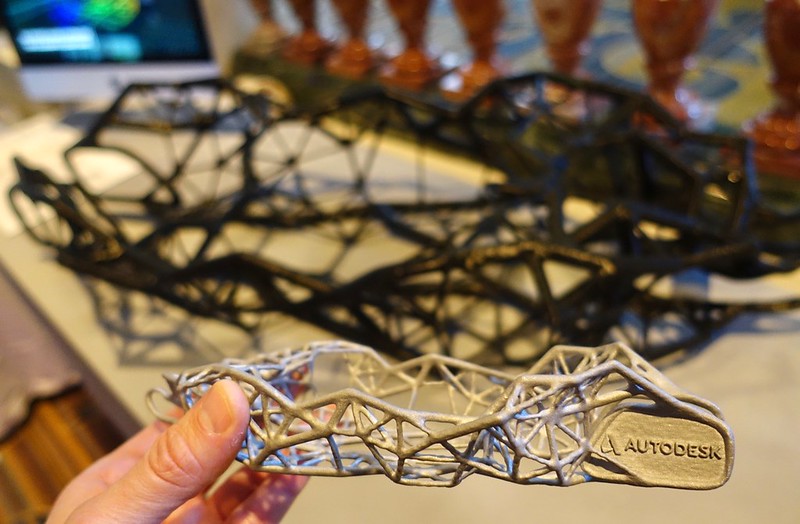Generative design
Contents |
[edit] Introduction
Generative design (or algorithmic design) is a design technique that takes a predetermined concept and quickly applies repetition to generate numerous possible solutions. Akin to traditional methods such as brainstorming or ‘napkin doodling’, generative design does not necessarily require technology, but in recent years, computers have often been used to speed the application of algorithms and refine the process.
[edit] History
Generative design is not a new theory. Its origins are not clearly documented, but it has been used since the 1970s as a way to approach complex design situations.
The demand for innovative solutions to design challenges has accelerated its adoption in architecture and construction. Improvements in affordable technology have also contributed to the growth of this design approach that can explore numerous possibilities in a relatively short period of time.
[edit] How generative design works
Generative design typically uses computer aided design (CAD) software to build on a basic concept and output a stream of (possibly unconventional) alternatives. The designer then inputs predetermined requirements and parameters into the program to improve the set of possible results and generate different designs more in line with feasible approaches. These results are then evaluated in a way that allows the designer to discard concepts that don’t work and generate an optimal solution.
The process includes the following steps:
- Generation.
- Analysis.
- Evaluation.
- Evolution.
- Exploration.
- Adoption.
With CAD-based version of generative design, the application of algorithms is automated, but it is up to the designer to evaluate the computer generated results and decide on the most precise option.
[edit] Related articles on Designing Buildings Wiki
Featured articles and news
Homes England creates largest housing-led site in the North
Successful, 34 hectare land acquisition with the residential allocation now completed.
Scottish apprenticeship training proposals
General support although better accountability and transparency is sought.
The history of building regulations
A story of belated action in response to crisis.
Moisture, fire safety and emerging trends in living walls
How wet is your wall?
Current policy explained and newly published consultation by the UK and Welsh Governments.
British architecture 1919–39. Book review.
Conservation of listed prefabs in Moseley.
Energy industry calls for urgent reform.
Heritage staff wellbeing at work survey.
A five minute introduction.
50th Golden anniversary ECA Edmundson apprentice award
Showcasing the very best electrotechnical and engineering services for half a century.
Welsh government consults on HRBs and reg changes
Seeking feedback on a new regulatory regime and a broad range of issues.
CIOB Client Guide (2nd edition) March 2025
Free download covering statutory dutyholder roles under the Building Safety Act and much more.
Minister quizzed, as responsibility transfers to MHCLG and BSR publishes new building control guidance.
UK environmental regulations reform 2025
Amid wider new approaches to ensure regulators and regulation support growth.
BSRIA Statutory Compliance Inspection Checklist
BG80/2025 now significantly updated to include requirements related to important changes in legislation.























